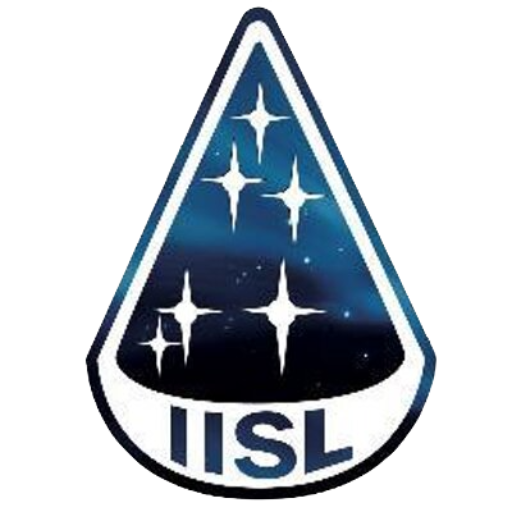List of contributors
Claudiu Mihai Tăiatu
Ingo Baumann
Erik Pellander
Neta Palkovitz
Jenni Tapio
Ruth Pritchard
INTRODUCTION
by Claudiu Mihai Tăiatu
The large constellations of small satellites indicate groups of thousands of small satellites to be operated mainly in Low Earth Orbit (LEO). Each constellation can have different orbital planes, with different inclination angles, ascending nodes, and different number of satellites per plane. Different sizes and weights can be used for the satellites in the constellation, the most common being the category of small satellites between 100 kg to 400 kg. Among the benefits of small satellites is that they are cheaper and easier to be replaced. However, the satellites will need to be replaced after approximately five years meaning that while the previous satellites are decommissioned, new satellites will be deployed. This can eventually contribute to a greater congestion and possibly add to the risk of collisions which is already increased in LEO. Some of the opportunities and challenges brought by the large constellations of small satellites will be discussed this week by our contributors. We take this opportunity to invite you to contribute to this topic.
by Ingo Bauman and Erik Pellander
Large constellations of small satellites raise various legal issues in relation to their launch and operations, as well as in relation to the provision of services.
As for the launch of satellite constellations, new types of smaller and/or reusable launchers will significantly decrease the waiting times between launches. As highlighted by the FCC in its 2020 Report and Order on Streamlining Licensing Procedures for Small Satellites “smaller, nimbler launch providers underscores the importance of reducing wait times for licensing and regulatory approval”.
As for the operations of satellite constellations, the resulting sharp increase in the number of satellites orbiting the Earth causes a threat to the sustainability of space activities, including higher collision risks, growth of space debris and monopolization of most frequented orbits. From a legal perspective,such threats to space sustainability are to be addressed through licensing procedures under national space law. Non-binding international guidelines on the mitigation of space debris are thereby imposed on operators as mandatory measures. Some States such as the US are currently in the process of adapting their national frameworks on space debris mitigation in the light of the rise of satellite constellations. Other regulatory measures, namely regarding the protection of astronomy, can be predicted.
Operations of large constellations are challenging traditional approaches under national space law, i.e. granting a single license per satellite and requesting an insurance policy corresponding to a liability cap per satellite. In view that satellites of a constellation may have the same technical parameters, new or amended space laws are urged to provide the possibility for constellation or group licenses and special liability and insurance solutions. While market competitiveness, fast production and launch rates call for faster licensing procedures, the particularities and complexities of large constellations, including impact on astronomy or assessments of collision risks, may require in-depth evaluations by licensing authorities.
Under international telecommunications law, access to spectrum and its coordinated use are extremelychallenging. The ITU has adopted a milestone–based approach for the bringing into use of NGSO satellite systems at WRC-19 and further regulatory measures can be expected for WRC-23.
As regards the provision of global broadband or connectivity services, landing rights under national telecommunications law remain a barrier in numerous countries. Operators may be requested to establish local affiliates, operate gateway stations or to cooperate with local entities.
by Neta Palkovitz
When I first started working with small satellites, more than a decade ago, no one could have predicted today’s large LEO constellations. Satellites were big and expensive, and mostly belonged to governmental organizations- and the UN Space Treaties have successfully reflected this situation. It was only logical to utilize public international law in order to regulate satellites’ operations in outer space, not only because space is not subject to the sovereignty of any specific state, but because the satellites were owned and operated by states.
In my book “Regulating a Revolution: Small satellites and the Law of Outer Space” I analyse the many ways in which non-governmental ownership of small satellites revolutionized and challenged the traditional perception of space activities and their regulation.
The case of the new large constellations takes things to the extreme: instead of governmental- private, instead of diplomatic channels- industry, and instead of justifying activities as beneficial to all countries- it is about the money. We would be delusional to trust that public international law can solely balance the interest of the now many different stakeholders in space activities.
In this sense, my view is that large LEO constellations push us away from the Outer Space Treaty, and towards commercial law which has to be applied on satellite operations.
A recent incident where small satellites from two different large constellations were on collision course illustrate my argument: although the collision was avoided, not all private satellite owners act according to the core values of the Space Treaties. Difficulties in cooperation and coordination were reported; can we expect two commercial entities, which happen to be competitors, to act as if they were two nations perusing space activities?
My answer to this question is “no”. Maneuvering satellites is an expensive and risky endeavour, this will have to be justified towards investors and shareholders. Perhaps the change in orbit might put a certain operator in breach of its service agreement towards its customer too. And since the governments which authorized and licensed these satellites operations, are not found in the control rooms, the decision to change orbit to avoid a collision is now reserved to CEOs, not nations.
I look forward to seeing what the next decade- the age of LEO constellations, will bring, and how commercial interests in space activities will interplay with international space law.
by Jenni Tapio
The United Nations space treaties do not specifically address the concept of ‘sustainability’, or provide for a definition of the term. Nevertheless, inter alia, the provisions stressing peaceful and responsible behaviour in the realization of the freedom of use and exploration; recalling the importance of cooperation and mutual assistance; the equality of States irrespective of their degree of development; or the terms recognizing the need to allocate the risks posed by the ultra-hazardous space activities, form the core of what can be called as ‘sustainable (development in) use of outer space’.
The importance of having an operational space environment, including Earth orbits, is gaining more attention due to the steady increase of the number of space objects. This is at least partly due to the emergence of ‘NewSpace’ that has brought in new space actors, novel ideas to use and explore outer space, including proposals for very large constellations of small satellites. These developments have altered the expectations for predictability and risk.
The concept of sustainable use of outer space – the preservation of the operational space environment for current and future activities, presents an example of both States and private actors interests converging. As it is the freedom of exploration and use, which allows States, and in turn private actors, to carry out their activities in outer space today and for the benefits to actually be derived.
The operational safety of space activities is a concern for the States as they assume international responsibility and liability for national space activities. Additionally, our societies are dependent on services, in whole or in part, by space based infrastructure, and it is generally agreed that the unavailability of these services would have grave socio-economic impacts. The principles set out in Articles I and IX of the Outer Space Treaty are reflected in the recently adopted LTS Guidelines, stating that in the implementation of the guidelines “States should be guided by the principle of cooperation and mutual assistance and should conduct all their activities in outer space with due regard for the corresponding interests of all other States”.Arguably, this is placing an obligation, albeit non-legally binding on the States, to reflect the common (corresponding) interest “to meet the needs of the present generations while preserving the outer space environment for future generations” at the domestic level, to ensure that the national activities are carried outin outer space in a way that promotes (long-term) sustainability of the outer space environment.
by Ruth Pritchard
Low-Earth orbit (LEO) satellite constellations are transforming the way we live and work. Only space-based technology can guarantee access to the internet everywhere (including at sea and in the air), and the newest satellites – LEO constellations – are affordable and global. Ten years ago, the United Nations declared that access to the internet was a human right. This is because the internet can provide every type of information as well as entertainment and social connections. During this same decade, personal mobility devices (portable laptop computers, personal mobile phones and the like) became ubiquitous, creating a demand for connectivity everywhere by everyone. Most nations consider satellites to be critical national infrastructure. Several companies have already begun building such constellations, and soon being remote will no longer mean being disconnected. These constellations are much closer to earth than traditional satellites thus there is no delay in the connection, so two-way transactions on the internet as well as voice calls are of the same high-quality as your 4G mobile phone. LEOs can use different orbits, at different altitudes and different inclinations. They use small satellites, made on assembly lines, and launched in clusters, and these advances in technology make the service more affordable than traditional satellites. LEOs can provide service directly to homes and offices and can also be used as the backbone infrastructure for mobile network operators in every country, meaning that universal service is truly achievable. Not just to 100% of the population but to 100% of the geography as well. Although in highly populated urban areas most nations have good terrestrial connectivity, in areas with poor or no terrestrial connectivity, the economics make sense to use LEOs. As 5G comes into service, LEOs will be used as part of that network as well. Laws and regulations need to adapt to the new era. If regulations are written in too-specific, technical language, it can be hard to update them when a new technology comes along. The best practice is to have flexible regulations that are less focused on the specifics of technologies and more focused towards providing a certain service level. LEOs will change the way we live and work in a way not seen since the industrial revolution. |
The IISL Knowledge Constellation platform can only advance and expand through the contributions of brilliant minds from around the world. Become a part of the change and share your knowledge, engage with one another, get to know the way others reason, and help reduce the gap in accessing the interconnected knowledge within space law.
The views and opinions expressed in each contribution are those of the respective authors and do not necessarily reflect the official position of the IISL.
© 2025 International Institute of Space Law (IISL). This work is licensed under a Creative Commons Attribution-NonCommercial 4.0 International License.


